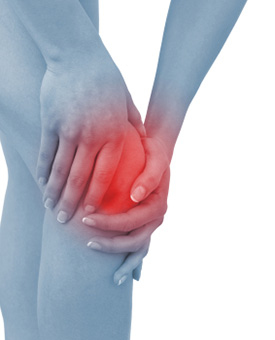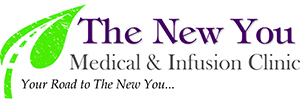Knee Ligament Injury Treatment in Weatherford, TX

To understand how knee ligament injuries occur, it's important to understand the anatomy of the knee. There are four bones that come together in the knee; only the femur (thighbone) and the tibia (shinbone) form the actual knee joint. There are also four ligaments—strong bands of connective tissue—that join one bone to another around the knee joint. Ligaments in the knee help stabilize and support the knee when it moves into different positions.
The ligaments around the knee are very strong, but they can sometimes become injured. Knee ligament injuries are quite common, especially among athletes. Ligaments sometimes become stretched (sprained) or torn (ruptured).
Types of Knee Ligaments
There are four main ligaments in the knee. Ligaments are elastic bands of tissue that connect bones to each other and provide stability and strength in the knee joint. The four ligaments in the knee are as follows:
- Medial collateral ligament (MCL): Located on the outside of the knee joint, the MCL runs between the femur and the tibia on the inner side of the knee. It helps to protect and stabilize the knee joint against blows or forces that may occur on the outer side of the knee.
- Lateral collateral ligament (LCL): This ligament is also located on the outside of the knee joint, and it connects the thigh bone to the fibula, the smaller bone of the lower leg on the outside of the knee.
- Anterior cruciate ligament (ACL): ACL injuries are common. The ACL is located on the inside of the joint, and it connects the thigh bone to the shin bone in the knee.
- Posterior cruciate ligament (PCL): Located in the center of the knee, this ligament runs diagonally across the knee to connect the back of the tibia to the front of the femur.
Knee Ligament Injury Causes
Many knee problems develop as a result of the aging process and continual stress on the knee joint. In these cases, a person may begin to suffer from arthritis in the knee joint. Other knee problems are a result of an injury or a sudden movement that strains the knee. Any direct contact to the knee or a hard muscle contraction—such as rapidly changing direction while running—can injure the knee ligament. Common knee ligament issues include the following:
- Sprains/strains: A blow to the knee or a sudden twist of the knee can cause a sprained or strained knee ligament injury. Symptoms often include pain, swelling and difficulty walking.
- Torn ligament: Trauma to the knee can cause ligaments to tear. Muscle weakness or incoordination predispose you to a ligament sprain or tear. Pain, swelling and instability are common symptoms of a ligament tear.
- Osteoarthritis: This type of arthritis is the most common in the knee joint. Osteoarthritis is a degenerative condition that affects the cartilage and ligaments in the knee joint. The most common symptoms of osteoarthritis are stiffness after resting and pain in the joints.
Treatment of Knee Ligament Injuries
Treating knee ligament injuries depends entirely on the severity of the injury. Mild to moderate knee ligament injuries may heal on their own over time, but more severe tears may require surgery. Nonsurgical treatment for knee ligament injuries may include the following:
- RICE method: Rest, ice, compression and elevation are all crucial when it comes to relieving pain and allowing knee ligaments to heal.
- Physical therapy : Exercises strengthen the muscles around the knee and improve joint stability. Therapy helps alleviate pain and improves recovery time.
- Bracing: Designed to prevent and aid the recovery of knee ligaments, braces allow you to expand or limit the range of movement as desired.
- Activity limitations: Reduce physical activity if you feel pain in the knee joint. This can be effective in preventing further damage to the knee joint.
Your physician may prefer knee ligament repair or reconstruction as a treatment for a complete knee ligament tear. Surgery to repair a torn knee ligament involves replacing the ligament with a grafted piece of healthy tendon. The tendon is usually taken from the kneecap or hamstring. The decision about whether to have surgery depends your activity level, overall health and any other knee injuries you may have.
Request more information about knee ligament injury treatment today. Call (817) 203-2760 or contact The New You Medical & Infusion Clinic online.
The New You Medical & Infusion Clinic
Address
100 Grapevine HwyHurst, TX 76054
(817) 203-2760
https://www.newyoumedclinic.com/
Hours
Mon:
10:00 am - 6:00 pm
Tue:
10:00 am - 6:00 pm
Wed:
10:00 am - 6:00 pm
Thu:
10:00 am - 6:00 pm
Fri:
Closed
Sat:
Closed
Sun:
Closed

